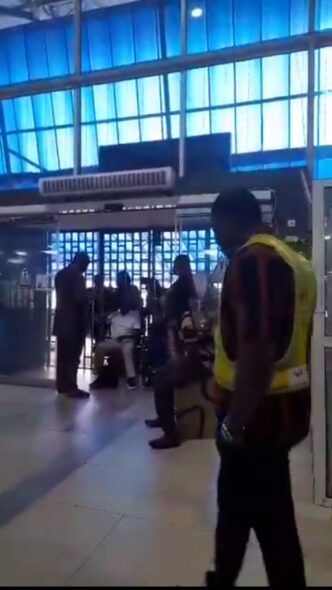Flooding, like most natural disasters, cannot be totally prevented. But when disaster warnings are given, and the areas at risk are known before hand, responsible State agencies are expected to take proactive measures to protect lives and mitigate the destruction of property. Since Niger State and Morkwa local government area were listed among the high-risk flood areas for 2025, it is safe to assume that the responsible authorities actually took some measures to minimize the losses of the recent flood disaster in Morkwa. If such measures were not in place, perhaps, the death toll would have been higher than the 110 precious human lives lost, and more houses and livestock would have been swept away by the raging flood.
Still, the Morkwa flood losses were unacceptably high, and this calls to question the level of preparedness and the efdeciency of the agencies responsible for disaster management in the state. Most importantly, it should serve as a wake-up call to all disaster agencies covering other high-risk flood areas. They need to get their acts together and come up with more effective proactive measures to save lives and minimize property losses to flooding.
In April this year, the Honourable Minister of Water Resources,Joseph Utsev, dutifully alerted the nation that 1,249 communities spread across 176 Local Government Areas, in 33 states and the Federal Capital Territory (FTC), could be severely flooded due to anticipated high rainfall at some point in 2025. Eleven of these local government areas are located in Sokoto state. These are Goronyo, Tangaza, Sokoto North and South, Rabah, Silame, Wamakko, Kebbe, Yabo and Shagari.
As expected of a responsive and people-oriented administration, the responsible agencies of Sokoto state government have swung into action, following directives from Governor Ahmad Aliyu of Sokoto to design-and implement proactive disaster management strategies to prevent, where possible, or mitigate the potential impact of any future flooding in any part of Sokoto state, since the disaster cannot be totally prevented. By this commendable initiative, the Sokoto State Governor has once more distinguished himself as a caring leader, always alert to the welfare of his subjects.
Responding to inquiries from this writer, the Sokoto state Ministry of the Environment said it is actively following up on the instructions of the governor by collaborating with NiMET (Nigerian Meteorological Agency), to identify areas most likely to be flooded this year. They are using reliable data to create flood risk maps to guide a comprehensive preparedness effort. “We are working with NiMET to obtain refined predictions on the approximate time to expect the flooding, to enable us to take targeted measures’’, the Ministry said in a written response to our inquiry, by the Honourable Commissioner of the Environment,Nura Shehu Tangaza.
It is to the credit of Governor Ahmad Aliyu of Sokoto that the Ministry has responded with utmost zeal and commitment to the 2025 national flood warning, to the extent that the relevant agencies now have a fair knowledge of the areas most likely to be affected by flooding, and are working assiduously to identify specific locations and populations facing the most threat. Additionally, they have launched a public awareness campaign to educate residents in flood-prone areas on the risk they face, what they can do to stay safe so as to minimize the negative impacts of the highly expected flooding.
With effective monitoring, residents of flood-prone areas hope to get timely advice to relocate to safer places ahead of the flooding, if necessary, based on the assessed severity of the flood risk and the vulnerability of the populations. And when the push comes to shove, the Ministry says it has a trained and adequately equipped specialized team for emergency rescue operations that can quickly respond to flood-related emergencies. As part of their drills and emergency response planning, the officials have identified location-specific evacuation routes and safe zones to ensure timely response to flooding.
Thus, it can be said with a measure of satisfaction that the Ministry of the Environment, Sokoto State, is capable and committed to minimizing the impact of flooding and ensuring the safety of residents in flood-prone areas, and they will continue to work with NiMET and other stakeholders to prepare for and respond to the flood threat.
While many of the 176 projected high-risk flood local government areas are located in the southern flanks of the country, or along major rivers, the inclusion of semi-arid Sokoto state in the high-flood list did not come as a surprise. Indeed, the state is not new to incidents of flood disasters. Just last year, 2024, several communities across the state experienced severe flooding, leading to widespread displacement, destruction of homes, and significant agricultural losses.
Specifically, on July 17, 2024, heavy rainfall caused devastating floods in Gada Local Government Area, displacing approximately 1,664 residents. The affected communities included Dantudu where71 households were drenched affected and 62 houses destroyed; Balakozo community where 33 houses were washed away while 15 other households suffered losses; Tsitse Town with 68 houses destroyed and 89 households affected. Together with Gidan Tudu, these communities lost about 779 hectares of farmland, numerous livestock, including cattle, sheep and goats.
Again, in August 2024, the border town of Illela and the southern part of Sanyinna town in Tambuwal Local Government Area suffered severe flooding, during which over 300 households were rendered homeless, with many homes collapsing and farmlands submerged. The flooding was attributed to the overflow of the Shagari earth dam. Shortly after the disaster, the National Emergency Management Agency (NEMA), conducted an assessment in Illela area, identifying communities such as Nassarawa, Amarawa, Munlela, and Dankuda as severely affected by floods attributed to heavy rainfall, absence of culverts, and poor drainage systems. Incidentally, Shagari LGA is also enlisted among the high risk flood areas in 2025.
In September 2024, Tangaza Local Government Area was among the worst flood-hit areas, with over 1,000 people affected by floods. Seven communities, including Sabon-Gari, Kawara, Farkaji, Mun-Wadata, Mallamawa, Gabas, and Magazawa, experienced significant damage in the form of the collapse of many houses and the submergence of large hectares of farmland, and the disruptioneconomic and social activities in the area. It is not a mere coincidence, therefore, that Governor Aliyu chose Honourable NuraShehu Tangaza as the Commissioner of the Environment to lead the charge to protect the citizens from harsh effects of natural disasters like flooding.
Sokoto state is fortunate to have a governor that cares about the welfare of the people, and the environment commissioner that knows his onions and is intensely dedicated to his duties.
It is gratifying to know that the state government is not sitting idle and waiting for the floodwaters to strike again this year to inflict pain and misery on the good people of the state. Instead, all the responsible agencies of government are working diligently to prevent, or minimize, possible displacement of families and thedestruction of farmlands and economic infrastructure by the anticipated floodwaters.
As the saying goes, to be forewarned is to be forearmed, meaning that, after receiving the alert of impending flood disaster, allresponsible agencies of government across the country must follow international best practices to design measures that would effectively moderate the negative impact of flooding in 2025.
Gatekeepers News is not liable for opinions expressed in this article, they’re strictly the writer’s











